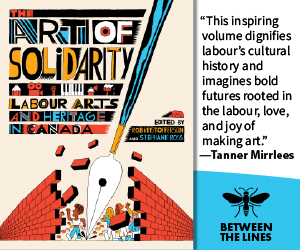Dishonouring the “Treaty Bundle”
Historian and Indigenous Studies scholar Sheldon Krasowski makes a sterling contribution to the dialogue about treaty negotiations in Canada. Such dialogue was once dominated by colonialist apologetics claiming that cultural misunderstandings between Euro-Canadian and Indigenous negotiators caused the latter to fail to comprehend that they had given up most of their lands to Canada. The not-sohidden message was that the Canadian negotiators behaved honourably but unfortunately their Indigenous counterparts were none too bright.
Holes were punched into such denigration of Indigenous leaders long before the treaty negotiations were revisited by numerous studies of the Canadian fur-trading period. These studies demonstrated both the dependence of the Europeans on Native peoples and the sharp skills of Indigenous hunters and middlemen in extracting good value for their products. The fur trade’s labour force requirements made it necessary for Europeans to abandon their normal colonization strategies of plantation slavery or forced labour in mines and industry. Indigenous trappers and traders could hardly be confined in small spaces with colonial overseers as they had to travel huge distances to hunt fur-bearing animals. But the transition from fur trade to settlement changed everything, reducing the bargaining power of Indigenous people. That did not mean that they had no maneuverability and that they suddenly forgot all that they had learned about European values and behaviours as they entered into treaty negotiations. Nor for that matter did the Europeans suddenly unlearn Indigenous protocols and understandings. Sheldon Krasowski’s close analysis of the negotiations for the first seven numbered treaties after Confederation makes this abundantly clear.
What Krasowski demonstrates painstakingly, using both the work of earlier historians and many primary Indigenous and Euro-Canadian sources alike, is that the Canadian government negotiators behaved dishonourably. While they followed Native protocols in the negotiations to create the impression that they would live up to agreed-upon promises during the talks, their real goal was to produce treaties that claimed that Indigenous people had surrendered their land rather than simply agreed to share it in restricted ways that were made transparent during the negotiations. The Canadian negotiators made clear, oral promises to the Indigenous people that they failed to include in the written treaties. This was done in full knowledge that Aboriginal peoples regarded the combination of ceremonies, oral promises, and expressions of mutual solidarity as a “Treaty Bundle,” to which the European written documents were an add-on but not separable from the rest of the bundle. As Krasowski shows, while some of those promises are mainly documented through the oral accounts that Indigenous historians within First Nations passed down from generation to generation, the evidence is amply buttressed in contemporary materials. Those include written manuscripts of the conversations that occurred during the negotiations, manuscripts that earlier historians conveniently ignored in favour of the official record, and observations at the time by eyewitnesses, including clergy and traders. What this evidence shows is that the Canadian negotiators produced their own “Treaty Bundle,” a tissue of distortions and omissions of what actually occurred during negotiations.
“Avoiding the surrender clause during the negotiations was the cornerstone of Canada’s negotiating strategy,” argues Krasowski. While the Indigenous negotiators were often alarmed when they heard the words of the treaties themselves and became reluctant to sign, many were prepared to accept the sincerity of negotiators who had expressed sympathy with Indigenous goals through days of negotiation. Promises of additional language to be added after their signatures or Xs were affixed assuaged skepticism and when no such language was added, written historical records and oral history alike demonstrate that Native leaders lobbied hard to have such promises entrenched. For a century the courts ignored the “Treaty Bundle” in favour of the written treaty documents sliced out of the context of the long conversations, ceremonies, and promise-making from both sides that preceded their composition by one side alone. Recent court decisions have promisingly set aside earlier colonialist assumptions that such documents could be dealt with in splendid isolation and have accepted at least some evidence that Indigenous people never surrendered their lands, never accepted that they were to be dispossessed, and were never given reason to believe that the colonial negotiators had any doubt on either score.
This is an important work on Canadian colonialism from the perspective of colonized people, although the author himself is Euro-Canadian. Krasowski emphasizes that treaties involved both Indigenous and new Canadians and both sides have rights and responsibilities as a result of the “Treaty Bundle.” For non-Indigenous people, that means that we have indeed been invited to share the land with Indigenous people but within a framework that respects the continued ownership of land by Indigenous people. This framework includes their principles of respectful dealings with animals and plants so that we can follow common paths to preserve the land and the air that provides life to all of us.
My only bone to pick with this book is one that I also have with much of Canadian historical writing on all subjects, including some of my own work. It’s just too claustrophobic. What was happening between settler-colonialists and Indigenous people in Canada occurred in a larger, global colonial context. I think it would have helped Krasowski’s account immensely, without compromising his excellent empirical evidence, to have provided some of that international context and to interrogate where the Canadian experience fits in and what unique features it presents.
Alvin Finkel is a prolific historian and president of the Alberta Labour History Institute. See page 47 of this issue for a review of his recent book, Compassion: A Global History of Social Policy.
This article appeared in the Summer 2019 issue of Canadian Dimension (CD Goes Digital).










